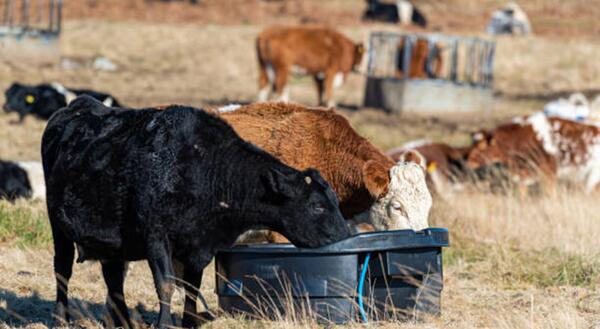
Drought conditions pose significant challenges for beef cattle producers, particularly in terms of ensuring an adequate water supply for their herds. Water shortage affects not only the well-being of the animals but also their productivity and overall profitability. Implementing effective water management strategies during droughts is crucial for maintaining herd health and minimizing the impact of drought on beef cattle operations.
Water Availability
Before implementing any management strategies, it is essential to access the available water resources on your farm. Determine the quantity and quality of water sources, such as ponds, wells, rivers, or tanks. Evaluate the reliability of these sources and estimate their sustainability during prolonged drought periods. Regularly inspect water storage and delivery systems for leaks and promptly repair any identified issues.
Water Usage
During a drought, prioritizing water usage is vital. They are using the available water resources based on the needs of your cattle. As a rule of thumb to follow for how much water each cow needs daily: consumption will range from 1 gallon per 100 pounds of body weight during the cold weather to close to 2 gallons per 100 pounds of body weight during the summer season. Identify water resources that may be needed in emergency situations. Installing additional water troughs or tanks in strategic locations throughout the grazing area can help provide backup options. Natural water sources like ponds, streams, or wells can also serve as alternative water sources but may require a tank for hauling needs. In times of prolonged power outages, having a generator to power well pumps may be necessary. Another solution could be to haul water to the animals.
Restricted Access
Control livestock access to water sources to prevent contamination and excessive trampling. Fencing off sensitive areas around ponds or streams can help protect water quality and reduce erosion. It is essential to have an appropriate amount of space for the cattle to access water. It is suggested that cattle need 3 inches of linear water space per head during the hot summer. Cattle that may be trailing to water or trying to drink in large numbers at the same time may need more space at the waterer. Adequate water pressure to refill drinkers quickly when demand is high is also a consideration during hot temperatures.
Nutritional Management and Health
Maintaining proper hygiene and health practices is crucial during drought periods to prevent disease outbreaks and maintain cattle welfare. Provide clean, fresh water to prevent the risk of waterborne illnesses. Regularly clean water troughs to remove debris and algae buildup, ensuring water quality and palatability. Regularly monitor the water consumption of your beef cattle to detect any abnormalities or potential issues. Observing reduced water intake could be an early sign of dehydration or health problems.
Dissolved Solids
Total dissolved solids (TDS) is a measure of contaminants in water. Contaminants can be alluding to issues with salinity, sulfates, nitrates, phosphates, and other dangers to water quality. Individual testing for nitrates, sulfates, phosphates, and microbiological contaminants may be needed. In general, high TDS levels can identify poor water conditions. TDS concentrations exceeding 5,000 ppm (parts per million) have a negative impact on consumption and everyday average gain. TDS concentrations exceeding 10,000 ppm shouldn't be utilized, while levels between 7,000 and 10,000 ppm are suitable for cows. Very high levels of TDS might cause diarrhea and a decrease in weight. Over the course of time, cows can become adapted to saline water, but a rapid switch to highly acidic water may be deadly.
Blue Green Algae
Depending on the type that is present, blue-green algal blooms may contain hepatotoxins, which cause liver damage, or neurotoxins, which cause harm to the nervous system. Animals that drink water with blue-green algae usually die 24 hours or less after doing so. Stagnant water exposed to sunlight during hot, dry weather presents the highest risk for blue-green algae.
Limited water presents significant challenges for beef cattle producers during droughts. By implementing effective water management strategies, producers can ensure the health and productivity of their herds while minimizing the impact of water scarcity on their operations. By adopting these practices, cattle producers can ensure animal safety and performance.